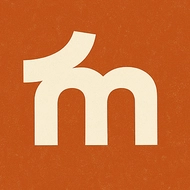Recently, I purchased an Arturia MicroFreak to further my musical exploration of Dub Techno Music. I currently have an album released on the Monofónicos Netlabel, which you can stream and download for free.
In my quest to learn how to use this new device, I sought help from the artificial intelligence Grok to ask how to create deep, textured, and immersive Dub Techno sounds with the Arturia Microfreak.
Whether you're an experimental sound artist or a producer looking for new ideas, this blog will guide you on how to combine human creativity with AI. This synergy can boost your workflow and take your music to new levels. Let’s start this sonic journey and craft some captivating Dub Techno vibes together!
1. How to create Dub Techno Chords
Turn on the MicroFreak and start by loading an initial preset by pressing Preset and selecting Init. This will give you a clean slate to work from.
To add harmonic variation, slightly detune the sound by turning the Waves knob. This subtle adjustment adds richness and depth to your chord.
Lower the filter cutoff to create a deep, warm tone and increase the resonance to emphasize the filter’s character. This will help shape a darker, more textured sound.
Set the envelope with a slow attack and long decay to make the notes evolve smoothly over time. This creates a more organic and spacious feel.
Use the LFO to modulate the filter cutoff, adding gentle pulsing movement that gives your sound rhythmic interest.
Finally, play low notes and enrich the atmosphere by adding external effects like reverb or delay pedals. This will produce a classic dub vibe with plenty of spaciousness and depth.
2. Creating a Sequence with the Dub Chord
Start by pressing Seq/Arp and select Seq to enter sequence mode. Then, hold down Record and play the chord using low notes to capture that classic dub feel.
Begin recording your steps by playing keys to build the sequence, which can be up to 64 steps long. This gives you plenty of room to craft evolving patterns.
For added variation, turn the Spice knob to randomize velocity and timing, injecting some natural groove and unpredictability. You can also use the Dice knob to reorder the sequence steps for fresh arrangements.
To add modulation, assign an LFO to any parameter by pressing the Mod Matrix button and selecting the desired source and destination. This lets you create dynamic movement and texture in your sequence.
When ready, press Play to start the sequence playback. Don’t hesitate to experiment with different sequence lengths and modulation settings to personalize your dub sound.
3. Creating a Stab
Begin by selecting the preset Init (Preset > Init) to start fresh.
Next, switch the oscillator to either Chord or Wavetable mode (turn the Type knob to Chord or Wavetable 7 for a deep sound). Choose a minor chord by adjusting the Timbre knob, and add subtle detuning using the Waves knob for extra texture.
Set the envelope with a short attack and medium decay to give the stab a sharp punch.
Use a low-pass filter with a low cutoff frequency and moderate resonance to shape the tone.
Add movement by modulating the cutoff with an LFO, creating subtle variation over time.
Play short, staccato notes and enhance the sound further by applying external reverb or delay effects.
Feel free to experiment and tweak settings until you find the perfect stab sound!
4. Creating a Dub Techno Pad
Start by selecting the preset Init (Preset > Init) to prepare a clean slate.
Set the oscillator to Chord mode (turn the Type knob to Chord) to play sustained chords.
Choose a wide minor chord using the Timbre knob, and add some detuning with the Waves knob to enrich the sound.
Shape the envelope with a slow attack, high sustain, and long decay and release times to create a smooth, fading pad.
Use a low-pass filter with a low cutoff and gentle resonance to add warmth and softness.
Modulate the filter cutoff or timbre with a slow LFO to generate evolving, atmospheric textures over time.
Finally, apply external reverb or delay effects and play low, sustained chords to complete the dub techno pad vibe.
5. Creating a Deep Bassline
Begin by selecting the Init preset (Preset > Init) to start from scratch.
Set the oscillator to Basic Waves (turn the Type knob to Basic Waves) to use sine or square waves for a deep low-end tone.
Lower the Timbre to achieve a deep bass tone, and use the Waves knob to add sub-oscillator character.
Configure the envelope with a short attack, medium decay, and low sustain for a tight, punchy bass sound.
Apply a low-pass filter with a low cutoff frequency and moderate resonance to shape the tone.
Modulate the filter cutoff with an LFO to add groove and movement.
Finally, record low notes in the sequencer (Seq) to create an offbeat rhythm typical of deep basslines.
Wrapping Up!
Integrating artificial intelligence into sound creation unlocks fresh inspiration and innovation. AI-guided assistance helps craft unique sounds and textures that could take hours to develop otherwise.
The Arturia Microfreak is a powerful tool for Dub Techno producers looking to enhance sound design. Grab your Microfreak and start experimenting—your next signature sound is just a patch away!



Top comments (0)